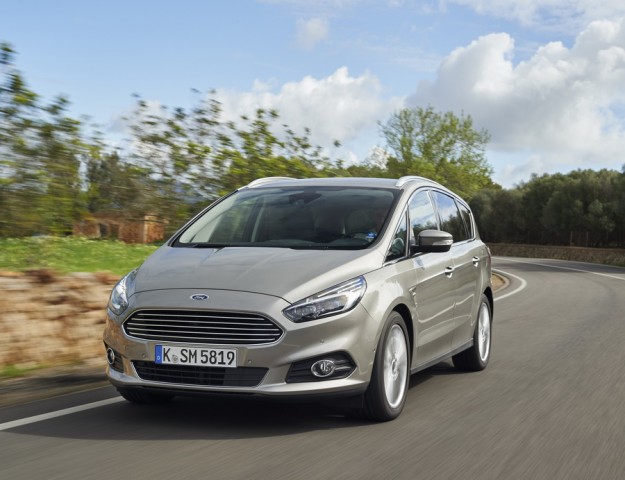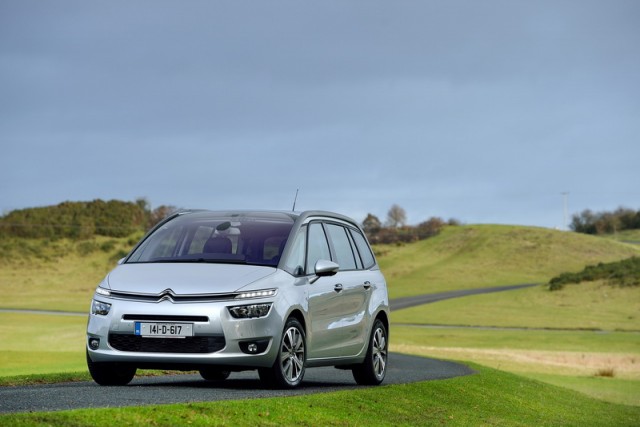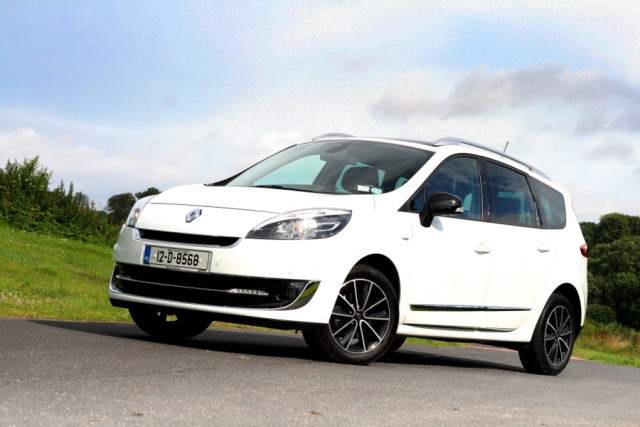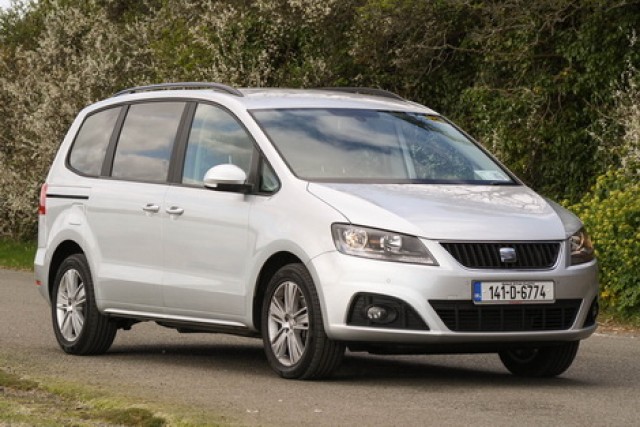As the second largest people carrier in the range, the new S-Max now distances itself a little further from the Galaxy and takes on a more dynamic approach.
In the metal 4/5
It can be hard to make a vehicle such as a seven-seat people carrier look either sexy or sporty, and although the former might not be wholly accurate when referring to the new S-Max, you can't say that Ford hasn't put in a good effort. To those already familiar with the previous S-Max model not a great deal has changed in terms of overall proportions. However, Ford's designers really have sharpened up the details on this new model so that it more accurately reflects what else is going on in the rest of the model range.
In keeping with its current design language, the front end is largely dominated by that trademark grille design we've become accustomed to. Understandably, some could be forgiven for thinking that Aston Martin had lost the total run of itself and built a people carrier, but it seems to be working well for Ford. Low slung fog lights along with sleeker headlights that feature LED daytime running lights (standard on the higher Titanium spec) nicely draw your eye up along the raked windscreen and roofline that slopes all the way down the rear of the car.
Its side profile is very much similar to the smaller C-Max, in fact apart from the sharper front end it looks essentially like a scaled up version. The rear end isn't bad either thanks to a rear diffuser that integrates twin exhaust exits. One criticism of the design would be the rear light units, which look also a bit too small for the car, and even though they feature bright LED light units, we couldn't help but think they would serve a more visual purpose if they were larger, especially at night as the actual LED elements are quite small.
A simplified interior design that places the 8-inch touchscreen of the SYNC 2 infotainment system at its centre is a welcome addition. Again, this is only standard fitment on the higher Titanium trim level, however Ford expects close to 70 per cent of buyers to purchase in this specification. Despite its sportier looks, there is still plenty of room inside the S-Max for both middle and even third row passengers although headroom is less generous at the back. That third row can optionally be made to fold flat or rise up via a control panel located on the side of the boot. The recessed door sills make climbing in to those rearmost seats a little easier.
Driving it 3/5
In some cases we would score the S-Max a full five out of five for how it drives but seeing how its rather excellent Continuously Control Dampened Suspension (to give it its full title) is only available as an optional extra, and a potentially expensive one at that, we'll score it based on the other car's standard suspension. To give the system its deserved credit it works very well and gives the S-Max very high levels of body control even when driven that bit harder. Disappointingly, driving in a similar fashion in a car equipped with the standard suspension setup reveals a car that is less sporting and agile in its performance. The issue is not with the grips levels per se, but thread the S-Max through a serious of bends at speeds above 50km/h and it lists from side to side in a rather ungainly manner.
At more urban speeds, the S-Max's steering comes in for recognition thanks to the new Ford Adaptive Steering. This variable ratio rack, co-developed with steering and airbag manufacturer Takata, requires less turns of the wheel from lock to lock at slow speeds, a boon when manoeuvre through multi-story car parks. Out on the open road this adjusts according to your speed, meaning that on the motorways, it feels nicely weighted and you get a true sense of exactly what the front wheels are doing.
The 180hp 2.0-litre TDCi engine is more than able to pull the S-max along at a comfortable pace. In fact, the 150hp engine should prove almost as capable too and may be more appealing to some buyers. A less powerful 120hp TDCi will also be available, while on the petrol side of things Ford will have a new, more fuel efficient 160hp 1.5-litre EcoBoost engine.
From the driver's seat, you are also given a wide field of vision thanks to that raked windscreen but the S-Max does fall into the category of those cars where it is difficult to see the end of the bonnet, something with which many people still seem to feel uncomfortable.
What you get for your money 3.5/5
Ford Ireland will initially offer the S-Max in two specification levels, Zetec and Titanium. Prices for the S-Max Zetec will start at €33,860 although it is thought that a lower style specification may be offered at a lower price.
With the Zetec grade, standard features include 17-inch alloy wheels, fog lights, LED rear lights, quickclear windscreen, Ford's SYNC infotainment, dual zone air conditioning, keyless start as well as electric child locks and windows. It will also come equipped with the MyKey system that allows different keys to be coded to, for example, limit to the car to a set speed.
The higher Titanium grade adds LED daytime running lights, chrome door line, automatic high beam assist, lights and wipers, a lane keeping aid and the new traffic-sign recognition system that also incorporates an Intelligent Speed Limiter. This system is designed to read the speed limit signs and automatically lower the car's speed if required in order to prevent you from drifting over the speed limit and potentially getting a speeding ticket. Titanium specification also includes the new SYNC 2 infotainment system that includes the 8-inch colour touchscreen and voice recognition.
One feature that was surprisingly omitted from any specification on the new S-Max is Ford's rear-seatbelt airbag system that debuted in the new Mondeo. Considering how Ford has kept it as a €200 optional extra in the Mondeo and not made it standard on the grounds that, according to Ford Ireland's Managing Director, Ciaran McMahon: "The Mondeo is a car that is less likely to have rear passengers in it". It is then somewhat surprising that not only is it not standard in the S-Max, a car that is far more likely to have rear passengers, it is not even available to order as an extra.
Summary
The new Ford S-Max is clearly being pitched towards younger buyers with families that need a practical family vehicle but still want something with some style. From this perspective, the new S-Max covers the brief well.



































